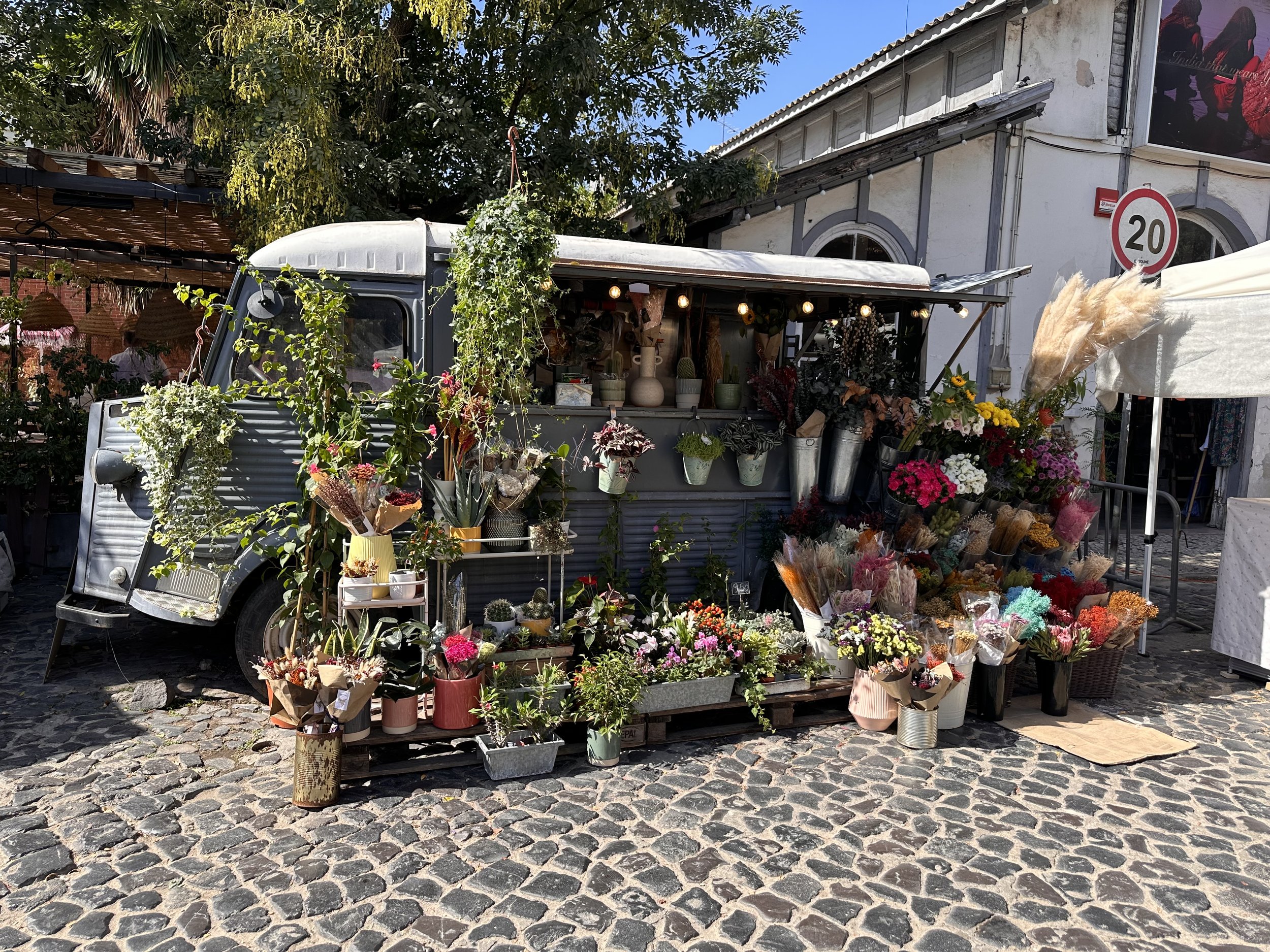What to do in Lisbon
What to see:
Take a million photos of tiles - the houses, pavements, churches….everything is tiled!
Catch the number 28 tram for a scenic ride around Lisbon. Best to get on at the first stop opposite Cemiterio dos Prazeres, and stay in the queue until you can get a window seat. Stay on for the whole journey, or stop along the way.
LX factory. Just along from Belem, this is a market filled with handcrafted goods and places to eat. Easy to while away a morning browsing. (Check out the mental health t-shirts made by Ivory Therapy - fighting loneliness around the world, one t-shirt at a time).
Catch a train from Rossio station to Sintra. Pena Palace is a Moorish castle transformed by King Ferdinand 11 in the 19th century into a whimsical blend of architectural styles. Allow a few hours and go either early or late in the day. Either way, there’s still plenty of queuing.
FInd a Fado club - go after dinner (late, about 10.30) and pay the cover charge. They’re mostly found in the historic quarters - Bairro Alto or Alfama.
Do a food tour with Culinary Backstreets. Great way to explore all the wonderful food available.
What to eat:
Cod croquettes - which are cheap and sold everywhere.
Bifana - pork sandwich cooked in lard. Not great for the arteries, but so delicious washed down with a cold beer.
Pastel de nata (custard tart) - of course! You can’t go to Portugal and not have them. At least one per day! To see where it all began visit Pasteis de Belem. The friars and nuns in the 18th century used egg whites for starching their clothes, and decided to use the yolks to make custard tarts that could be sold to raise money.
Tinned sardines. They’re everywhere, often in beautifully decorated cans. Great souvenirs to take home.
Where to eat:
Time Out market has an endless choice of pop up restaurants and gourmet offerings.
Mercado de campo de ourique- a smaller, less chaotic version of Time Out Market. And Campo de Ourique is a great place to base yourself - its a bit further out of the centre but very authentic, lots of great cafes and still walkable everywhere.
What to wear:
Summers are hot, and it can still be high temperatures into early October.
Wear good walking shoes - preferably with a grip on the sole. Not only is Lisbon made of hills, it also has most of its pavements paved with tiles, which although beautiful, can be deadly if it rains.











